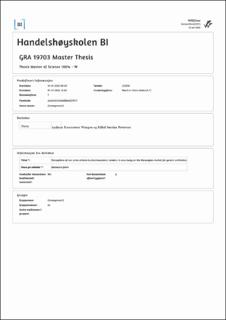| dc.description.abstract | Described as one of the cornerstones of modern society, the availability of antibiotics is crucial. A worrying trend is a drastic decrease in suppliers and producers (Roland Berger, 2018), and the increased frequency of medicine shortages. These worrying trends are further amplified by the global threat of antimicrobial resistance (AMR), worsened when manufacturers release resistance-causing materials into the local environment, or through the usage of broad-spectrum antibiotics. The market is experiencing a withdrawal of suppliers due to the low prices and volume, strict policies, and complexity. These issues call for new procurement practices, intended for more sustainable outcomes. Norway has introduced environmental criteria in tenders as a response to the challenges. This study investigates the Norwegian market for generic antibiotics and the introduction of environmental criteria. The aim of the study is to reveal how the implementation of environmental criteria can affect the supplier's longevity, availability, and reliability to make the market more sustainable.
To answer our research questions, we conducted a case study on the Norwegian market for generic antibiotics. Additionally, Sweden was used as a comparison to investigate countries with similar policies, but different populations. The data consists of semi-structured interviews, quantitative data, reports, and databases. The study has been carried out using a mix-method research strategy, with an abductive research approach. Our study uses literature and quantitative data to reveal the current challenges and market characteristics, further analyzed with qualitative data to determine the current effect of environmental criteria, and how it can further impact the market situation.
Our findings stipulate high consensus from suppliers and practitioners that awarding fulfillment of environmental criteria can be used as an incentive to generate longevity, availability, and reliability of suppliers and antibiotics. Awarding environmental considerations through higher prices and the possibility to compete with other drivers than price, was seen as positive. A secondary benefit was that it may increase supply chain transparency, allowing procurers to understand where active ingredients and finished products are produced. This increased knowledge, unavailable today, can be used as a preventative measure to alleviate shortage | en_US |
